This article is part of a series on cycling in Korea. For a six-part guide on cycling the Korean cross-country route, click here. For an overview of the entire cross-country route, click here.
Cycling in Korea is an increasingly popular activity for both residents and tourists. With eleven well-maintained bicycle routes crisscrossing the country, it’s never been easier to jump on a bike and get out of the big cities to see more of Korea.
But whether you’re a local enthusiast or a tourist looking for an adventure, long-distance cycling comes with its own set of logistics challenges: Where to sleep, how to navigate, how to get home at the end or even how to get a bike.
This guide specifically focuses on the logistical challenges a cyclist might face while riding the 630-kilometer cross-country Incheon-to-Busan route, but all the solutions could be applied to other routes in Korea.
Finding a route
Korea has made it incredibly easy for cyclists to navigate the country. There are 11 official cycling routes (or 12, depending on how you count them) and all are clearly signposted.
Along every route there are regular certification centers, where cyclists can stamp their bike passport (more on that below), and you can earn a certificate for every route you complete. Cyclists who tackle the cross-country route, the four rivers route or who complete everything can also receive medals.
The 11 routes are:
Ara Bicycle Path, running about 20 kilometers from Incheon to the edge of Seoul
Hangang Bicycle Path, running 192 kilometers from the western edge of Seoul to Chungju Dam
Bukhangang Bicycle Path, a 70-kilometer jaunt from the eastern edge of Seoul up to Chuncheon, Gangwon
Saejae Bicycle Path, 100 kilometers through the Sobaek Mountains in the middle of Korea
Ocheon Bicycle Path, a 105-kilometer route connecting the Saejae and Geumgang bicycle paths
Nakdonggang Bicycle Path, 389 kilometers from the center of the country to the southeast coast
Geumgang Bicycle Path, 146 kilometers connecting the central highlands to the west coast
Yeongsangang Bicycle Path, 133 kilometers through the southeast of the country
Seomjingang Bicycle Path, a 149-kilometer trail starting in the hilly interior and ending on the south coast
East Coast Bicycle Path, tackle Korea’s hilly east coast in two chunks, 242 kilometers in Gangwon and 76 kilometers in North Gyeongsang
Jeju Fantasy Bicycle Path, a 234-kilometer circumnavigation of Jeju Island
For certification purposes, the East Coast Bicycle Path is split into two, Gangwon and North Gyeongsang, and the southern stretch of the Han River, from the eastern edge of Seoul to Chungju Tangeumdae, also earns a separate Namhangang certificate. Ara Bicycle Path does not receive its own certification.
To receive the Korea Cross Country Cycling Road medal, cyclists need to link together the Ara, Hangang, Saejae and Nakdonggang routes, collecting all stamps except for Chungju Dam at the end of the Hangang route and Andong Dam at the start of the Nakdonggang route.
To receive the Four Rivers Cycling Road medal, cyclists need to collect all stamps on the Hangang, Nakdonggang, Geumgang and Yeongsangang routes.
More information on cycling routes can be found on the official bike.go.kr. Detailed information is also available on the independently-run koreabybike.com, which offers a wealth of information for cyclists in Korea, although some of it is behind a paywall.
Getting started
If you want to cycle one of the official routes, then the first thing you need is a bike passport. These can be purchased in person at one of seven locations nationwide: Ara West Sea Lock Certification Center, Gangcheonbo Certification Center, Nakdonggang Estuary Bank Certification Center, Daecheong Dam Certification Center, Baealdo Waterfront Park Certification Center, Seungchanbo Certification Center and Bike Trip (a bike rental shop near Jeju’s Yongduam Certification Center).
Online purchase is also an option for Korean residents, but tourists will need to visit one of the certification centers. They generally don’t open until 9:30 a.m., so don’t plan for an early start.
Passports cost 4,000 won ($2.80), and you can pay an extra 500 won for a map. The tourist one is slightly different from the resident version, and tourists who complete a medal route (i.e., cross-country) will receive their medal and certificate on the spot after crossing the finishing line (assuming the certification center is open). Korean residents need to apply online after completion.
Finding a bike
If you don’t live in Korea and you’re traveling without a bike, a number of places in Seoul and Busan offer rental services for cyclists looking to complete the cross-country bike path or other long-distance routes.
The Korea JoongAng Daily spoke to Bike Rental Korea and Bike Nara, both based in Seoul, to find out more about the services available.
Both companies offer a range of bikes, including hybrid, gravel and e-bikes, for rental, with prices starting around 25,000 won ($17) per day. At Bike Nara, rental is inclusive of helmet, rear rack, lock, tool kit, spare tube, pump, safety lights, water bottle cage and luggage storage at their shop in Seoul.
Most services also offer the opportunity to rent panniers at a small additional cost, as well as the option to return the bike at the end of the course rather than having to return to Seoul with it.
Similar services exist across Korea, and many of those in both Seoul and Busan offer English services. A reservation is required, and it is worth getting in early — Bike Nara told the Korea JoongAng Daily that the number of tourists renting bikes has almost doubled in the last year alone.
Navigation
Google Maps is an unreliable resource in Korea, with Korean services Naver Maps and Kakao Maps offering far more reliable navigation.
Of the two, Kakao Maps is always the first choice for Korean cyclists. The app, which is available in English, offers detailed cycling routes and prioritizes bike lanes wherever possible. All eleven of the official Korean bike routes are navigable on Kakao, and the interface even shows elevation.
Naver Maps also has a cycling option, but it does not prioritize bike-friendly routes as effectively as Kakao.
If you plan to use a head unit, then options are a bit more limited. Even the big international manufacturers use map data that is often imperfect in Korea, so these are not the best tools for navigation.
There are some Korean cross-country route maps available on route-planning services like Komoot, but they tend to be unreliable. Even if you are using a head unit, it’s worth planning your day-to-day travel using Kakao Maps and having your phone on hand.
All the certification centers are searchable on Kakao Maps, so you can put together a day’s ride by linking up the certification centers you intend to visit.
Where to stay
Outside of major city and tourist hubs, finding a hotel in Korea can be challenging if you only have access to international, English-language services like Booking.com.
If traveling on the cross-country route, hotels in Seoul and Busan will be easy to find online, while areas like Yangpyeong, Gyeonggi and Mungyeong, North Gyeongsang, are touristy enough to offer a few options.
Other areas, like parts of North Chuncheong and South Gyeongsang, are far less popular with international tourists and may offer little or no options.
If that’s the case, the short answer is: Don’t panic.
Practically all Korean towns have a wealth of cheap, accessible motels. These will generally set you back between 50,000 and 100,000 won and do not need to be booked in advance.
Rocking up and finding somewhere to stay in a random town in Korea is very doable and also allows you to cycle at your own speed, stopping when you feel like it, rather than pushing on to hit what felt like a doable distance when you booked everything a month earlier.
Motels are often the most convenient places to stay while cycling, as those in towns on major bike routes are accustomed to cyclists and offer bike storage. Many will also have pumps available and a place to fill up your water bottles.
Moving around Korea with a bike
While Korea is an exceptionally easy country to navigate by bike, traveling with a bike is often a very different story.
Unless you’re very committed to riding everywhere, you will likely need to get either to a start line or from a finish line at some point during your Korean cycling adventure. This is one area where many tourists have it easy — bike rental shops can now only arrange to transport your rental bike back to the point of origin, but they also offer transport services to the start line.
If you haven’t rented a bike, however, things are a lot more complicated.
To reach the start line in Incheon or Busan, the most common option is the subway. Unless you’re using a folding bike, this option is limited to the weekend. Most Seoul and Incheon subways lines allow bikes on weekends and holidays, although the Airport Express, which takes you to Cheongna International City Station near Ara West Sea Lock, requires a reservation by clicking here.
Calling a taxi is also an option, but one that requires some planning. While on-the-spot taxis will normally not take a bike, call vans, which are prearranged people carrier taxis, generally will with some warning. This can often be sorted out just a few hours before you travel — I finished the cross-country route in Busan, woke up the next morning to torrential rain and was able to sort out a call van to get me to the airport. You will need the help of a Korean speaker to make this option work.
To move around the country, options are now limited to bus or plane, with nearly all trains no longer accepting anything but folding bikes.
Korea has an incredibly extensive intercity bus network, and this can be an effective and cheap way to move around the country. Bike places cannot be reserved, so it is at the driver's discretion whether they have room or not. This does raise the risk that cyclists could be turned away at the last minute, although in practice this is rare.
The final option is to fly, which is actually surprisingly easy in Korea.
Domestic flights are regular and cheap in Korea, and airlines charge very little for the luxury of flying with a bike. The only downside is the need to have it packaged in a bike box, an expensive piece of kit for the casual cyclist.
Korean company Roundel has solved that problem for the domestic flier, offering a cheap bike box rental service that allows a cyclist to ride into an airport, pick up their box, pack and fly, return the box and ride out again.
The Korea JoongAng Daily tested the Roundel service when flying from Busan to Seoul at the end of the cross-country ride. The service was provided for free on that occasion but would normally cost a cyclist 30,000 won to fly one way, or 48,000 won return.
The kit was ready and waiting upon arrival at Gimhae International Airport, and it took about 20 minutes to remove the front wheel and handlebars of the bike and pack it into the provided collapsible box with foam inserts. Some tools are provided at the airport.
Busan Air charged just 10,000 won in handling fees for the bike, which fell within the included weight limit, so no additional costs were incurred.
Upon arrival at Gimpo International Airport, Busan Air returned the bike, and it took about 15 minutes to rebuild it, pack up the Roundel box and return it to the collection center.
All in all, it would have cost a total of 40,000 won, or about $30, to fly a bike the length of Korea. The service is cheap, easy to use and well worth considering. For cyclists looking to tackle Jeju Island, flying or an overnight ferry are the only options.
![My bike fully loaded for a 600-kilometer ride [JIM BULLEY]](https://imgnews.pstatic.net/image/640/2025/10/15/0000078232_001_20251015173214176.jpg?type=w860)
![The official certified bicycle routes operated by K Water [KOREA JOONGANG DAILY]](https://imgnews.pstatic.net/image/640/2025/10/15/0000078232_002_20251015173214354.jpg?type=w860)


![The certification center at the abandoned Buljeong Station in Mungyeong, North Gyeongsang on Sept. 29. [JIM BULLEY]](https://imgnews.pstatic.net/image/640/2025/10/15/0000078232_005_20251015173214977.jpg?type=w860)


![A long, flat trail winds around the outskirts of Daegu on Oct. 1. [JIM BULLEY]](https://imgnews.pstatic.net/image/640/2025/10/15/0000078232_008_20251015173215532.jpg?type=w860)
![Dedicated bike parking right outside the front door of a hotel in Chilgok, North Gyeongsang on Sept. 30. [JIM BULLEY]](https://imgnews.pstatic.net/image/640/2025/10/15/0000078232_009_20251015173215755.jpg?type=w860)

![The bike car on Seoul Subway Line 7 [JOONGANG ILBO]](https://imgnews.pstatic.net/image/640/2025/10/15/0000078232_011_20251015173216181.jpg?type=w860)

![A Roundel bike box rental kit collected at Gimhae International Airport on Oct. 3. [JIM BULLEY]](https://imgnews.pstatic.net/image/640/2025/10/15/0000078232_013_20251015173216417.jpg?type=w860)

![All packed up and ready to go at Gimhae International Aiport on Oct. 3. [JIM BULLEY]](https://imgnews.pstatic.net/image/640/2025/10/15/0000078232_015_20251015173216927.jpg?type=w860)

















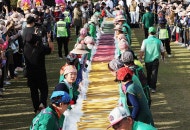
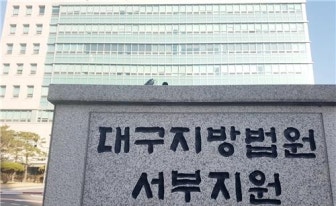
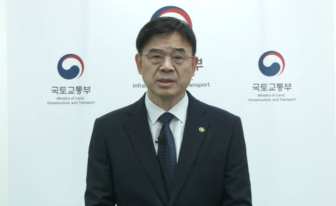
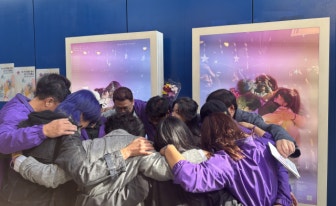

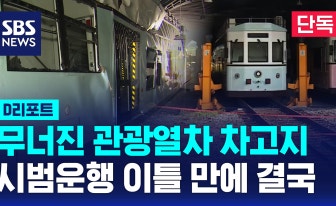


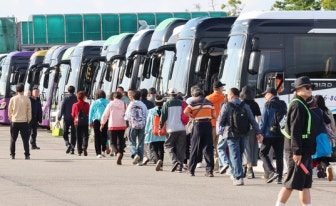





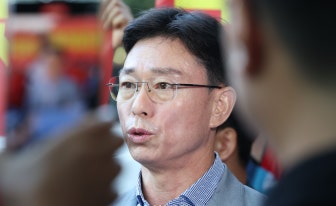

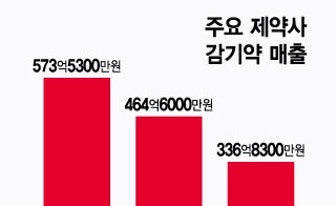
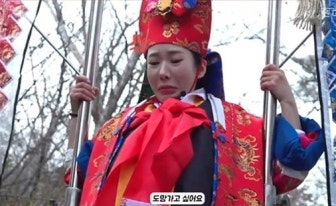


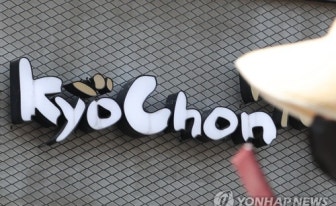





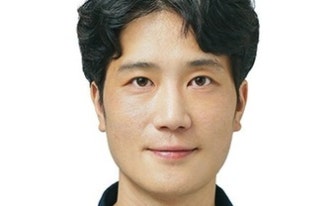
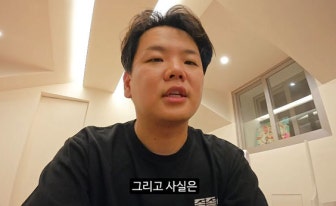

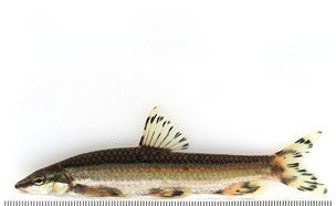

.jpg?type=nf190_130)










